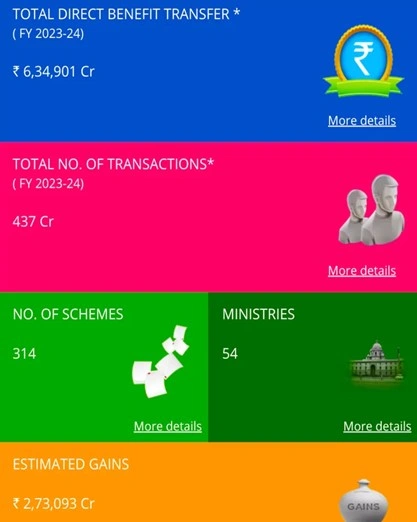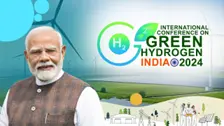Wednesday, 18th September 2024
‘Food vs Cars’ Dilemma
Why in the news ?
- Recently, the “food versus cars” dilemma is linked to phosphoric acid, the key ingredient in di-ammonium phosphate (DAP).
What is the Food vs Cars Dilemma?
- About:
- Phosphoric acid is switched from being produced as di-ammonium phosphate (DAP) charcoal to being produced as lithium iron phosphate (LFP) batteries, which are necessary for electric vehicles (EVs).
- Formation of phosphoric acid:
- They are produced by grinding rock phosphate and reacting with sulfuric acid.
- Phosphorus consumption:
- Use in Fertiliser: DAP, India’s second most consumed fertiliser after urea, contains 46% phosphorus, which is essential for crop root and shoot growth in the first crop
- LFP batteries: Phosphoric acid is also used in LFP batteries, gaining market share due to low cost, long life and safety, increasing from 6% by 2020 to 40% of global EV demand by 2023
What is the Global Trend towards Food Vs Car Dilemma?
- Increasing market of LFP batteries: LFP batteries are gaining popularity due to their low cost and safety features, increasing the demand for phosphorus.
- Switch to LFP in the US/Europe: US and European EV manufacturers are transitioning to batteries with less reliance on critical minerals like cobalt, which has limited global reserves of 11 MT, with 6 MT located in the Democratic Republic of the Congo.
- China's growing EV market: By 2023, two-thirds of EVs sold in China will use LFP batteries. The abundant phosphate reserves in China help to convert large amounts of phosphorus from coal to batteries.
- Investing in phosphate-rich countries: Countries such as Morocco, which have significant shale phosphate reserves, are attracting large investments in LFP battery production, increasing competition for phosphorus materials.
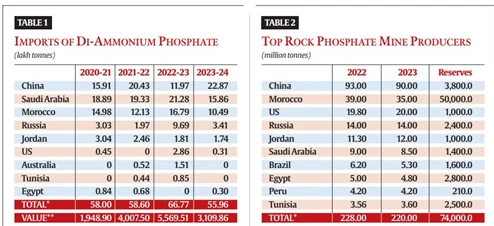
What does the food transport challenge mean for India?
- India’s Dependence on DAP: India consumes 10.5-11 million tonnes of DAP annually, and phosphoric acid conversion threatens its coal security.
- Phosphate Dependency: Phosphate reserves in India are limited (31 MT) and depend on imports from China, Morocco. The increasing use of phosphoric acid in LFP batteries will make India more dependent on imports.
- Heavily reliant on China: China’s switch to using more phosphoric acid for LFP batteries will reduce DAP exports, exacerbating India’s coal problem.
- Impact on Agriculture: Crops such as mustard, potato, chickpeas and wheat grown in India may suffer due to reduced DAP imports.
- Increasing DAP values: Phosphorus conversion has increased the cost of DAP and its price has now fallen to ₹61,000 per tonne, causing huge losses to Indian fertiliser companies
The way forward:
- Promoting hardy crops: Dependence on DAP can be reduced by promoting the use of low-phosphorus products.
- Provision of safety equipment: India should set up joint ventures and buyback schemes to secure phosphate supplies with a focus on countries like Senegal, Jordan, Morocco and Tunisia.
- Improve Nutrient Use Efficiency: Efforts should be made to increase nutrient utilisation efficiency by adding small amounts of nitrogen, phosphorus, and potassium.
- Support DAP Manufacturers: India should compensate for the loss by increasing domestic prices and subsidising domestic DAP manufacturers.
Source: (IE)
RBI Highlights Issues in “Financing for Sustainable
Why in the news ?
- Recently, RBI deputy governor Swaminathan J described that regional disparities in lending to agriculture remain a concern even as institutional credit to agriculture reached an all-time high.
Issues with Agro-Financing in India:
- Regional Imbalances: Southern Region holds 47.13% of agro-financing, while Northeast Region holds only 0.76% (2021-22).
- Access to Credit: Approximately 23% of credit is still sourced from non-institutional sources (2021-22).
- Non-integrated Value Chain: Fragmented land holdings hinder value chain financing.
- Other Issues: High finance costs, lack of collateral, and complex procedures.
Solutions for Sustainable Financing:
- Strengthening Collectives: Promoting FPOs and FPCs to improve farmers' bargaining power, access to technology, and secure markets.
- Value Chain Financing: Integrating farmers, aggregators, traders, and processors to streamline the agricultural system.
- Warehouse Financing: Stabilising agricultural commodity prices through better warehouse facilities.
- Financing Technology: Promoting micro-irrigation, irrigation infrastructure, and farm mechanisation.
- Capital Formation: Aligning government schemes with interest subventions to promote capital investment in agriculture.
- Leveraging Technology: Collaborating with digital platforms for data-driven insights to improve financing models, e.g., tracking crop yields.
Steps Taken for financing Agriculture:
- Kisan Credit Card (KCC): To meet the working capital needs of farmers. As of March 2023, over 6 crore KCCs have been issued.
- Agricultural Infrastructure Fund (AIF): To support farm-gate infrastructure development. Rs. 1 lakh crore fund allocated over 10 years, started in 2020.
- Agricultural Marketing Infrastructure (AMI) Scheme: To support the construction or renovation of godowns and warehouses. Government provides subsidies at the rate of 25% and 33.33%.
- Mission Organic Value Chain Development for North Eastern Region (MOVCD-NER): To create a comprehensive value chain from inputs to consumer markets and boost exports. Rs. 300 crore allocated for development in the North Eastern Region
|
UPSC Civil Services Examination, Previous Year Question (PYQ) Prelims Q:1 Which of the following statements best describes the term ‘Scheme for Sustainable Structuring of Stressed Assets (S4A)’, recently seen in the news? (2017)
Ans: (b) |
Source: ET
Rs 6,000-crore scheme to boost precision farming
Why in the news ?
- Recently, the Union Ministry of Agriculture under the Mission for Integrated Development of Horticulture (MIDH) allocated ₹6,000 crore to promote precision farming under a new Smart Precision Horticulture Programme.
- The scheme will cover 15,000 acres of land in five years from 2024-25 to 2028-29 and is expected to benefit about 60,000 farmers.

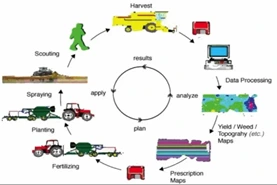
Img:Components of precision farming Img: Precision Farming
What is Precision Farming?
- About:
- Precision farming (PF) leverages advanced technologies like GPS, sensors, drones, and data analytics to optimise agricultural inputs (water, fertilisers, pesticides) based on specific site conditions.
- Area Under Precision Farming:
- Currently, PF is in its early stages in India, with limited adoption primarily in states like Punjab, Haryana, Maharashtra, and Andhra Pradesh.
- Benefits:
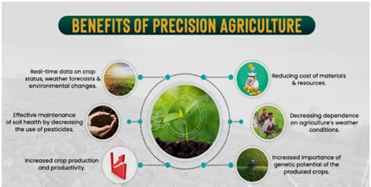
- Challenges:
- High Initial Cost: Precision tools and infrastructure are costly, deterring small farmers.
- Technical Expertise: Farmers need training to interpret data and use technology effectively.
- Digital Divide: Limited internet access in rural areas hampers adoption.
- Data Management: Requires specialised software and skills for effective data processing.
- Steps Taken:
- Government initiatives like the National Mission on Sustainable Agriculture (NMSA) and Pradhan Mantri Krishi Sinchayee Yojana (PMKSY) promote water-use efficiency and soil health monitoring.
- Drones, soil health cards, and satellite-based monitoring have been encouraged.
- Development of Digital Public Infrastructure (DPI) for agriculture to improve farmers’ access to technology.
- 22 Precision Farming Development Centres have been set up to advance PF technologies.
- Agriculture Infrastructure Fund (AIF) and funds under the National e-Governance Plan in Agriculture finance smart agriculture projects.
- Role of Agriculture Infrastructure Fund (AIF) in promoting precision farming
- Under AIF, Farmer Producer Organization, Primary Agricultural Credit Societies and SHGs are eligible for loans with interest subvention of 3% for using technological solutions in farm practices.
- These practices include:
- farm/ harvest automation;
- purchase of drones, putting up specialised sensors on field;
- use of blockchain and AI in agriculture;
- remote sensing and Internet of Things (IoT).
- Collaboration with other countries to promote precision farming in India
- The government is also collaborating with countries like the Netherlands and Israel for advanced farming solutions, with a plan to establish 100 Centres of Excellence (CoEs) in five years.
- Already, 32 Indo-Israel CoEs have been set up in 14 states.
Source: IE
4th E-INVEST 2024
Why in the news ?
- Recently, the 4th Global Renewable Energy Investors Meet and Expo (RE-INVEST 2024) in Gandhinagar.
- Solar energy capacity in India has increased by 30 times in the last 9 years reaching 89.43 GW (as of August 2024).
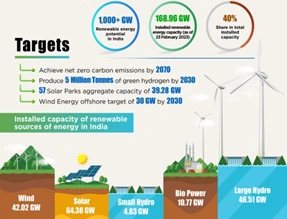
Renewable Energy Installed Capacity in India:
- As of August 2024, Renewable Energy (RE) sources (including large hydropower) have a combined installed capacity of 199.52 GW.
- The following is the installed capacity for Renewables:
- Wind power: 47.19 GW
- Solar Power: 89.43 GW
- Biomass/Cogeneration: 10.35 GW
- Small Hydro Power: 5.07 GW
- Waste To Energy: 0.60 GW
- Large Hydro: 46.92 GW
- As per REN21 Renewables 2024 Global Status Report, India stands 4th globally in RE installed capacity (including large hydro), 4th in Wind Power capacity and 5th in Solar Power capacity.
Growth of Renewable Energy Installed Capacity in India:
- India’s installed non-fossil fuel capacity has increased 396% in the last 8.5 years and stands at more than 207.76 GW (including large hydro and nuclear), which is about 46% of the country’s total capacity.
- The country has set an enhanced target at the UNFCCC’s COP26 (Glasgow, 2021) of 500 GW of non-fossil fuel-based energy by 2030 - the world's largest expansion plan in renewable energy under the Panchamrit Pledge
Key Growth Drivers of Renewable Energy in India:
- Government commitments:
- Reduce India’s total projected carbon emission by 1 Bn tonnes by 2030,
- Reduce the carbon intensity of the nation’s economy by less than 45% by the end of the decade, and
- Achieve net-zero carbon emissions by 2070.
- Proposed solar cities and parks:
- The government approved solar city per state and the setting up of 57 solar parks of 39.28 GW capacity across the nation.
- The government is also giving a push to Floating PV Projects.
- National Green Hydrogen Mission: The government launched the mission with an aim to produce 5 million metric tonne (MMT) green hydrogen per annum with an associated renewable energy capacity of about 125 GW by 2030.
- Off-shore Wind Energy: The medium and long-term targets for off-shore wind power capacity additions are 5 GW by 2022 and 30 GW by 2030.
- Wind-Solar Hybrid Policy: In 2018, national policy was announced to promote an extensive grid-connected wind-solar PV hybrid system for efficiently utilising transmission infrastructure and land.
- Atma Nirbhar Bharat: The PLI scheme in Solar PV manufacturing was introduced under Atma Nirbhar Bharat.
- Promoting FDI: Up to 100% FDI is allowed under the automatic route for renewable energy generation and distribution projects subject to provisions of the Electricity Act 2003.
- Union Budget 2024 Highlights:
- The Centrally Sponsored Scheme for Solar Power (Grid) has been allocated INR 10,000 Cr.
- PM-Surya Ghar Muft Bijli Yojana has been allocated INR 6,250 Cr. Under this scheme, the government provides funds and helps in installation of solar rooftops in every household.
- Exemption of Basic Customs Duty (BCD) on imports of 25 critical minerals important for the renewable energy sectors has also been announced.
The Green Energy Sector Highlighted by the PM at the RE-INVEST 2024:
- A new Bio E3 (Biotechnology for Economy, Environment, and Employment) policy has been approved for promoting high performance bio manufacturing.
- For offshore wind energy projects, a viability gap funding scheme has been approved with an outlay of ₹Rs 7000 crore.
- The Union government has set aside a ₹1 trillion research fund for taking several initiatives for electric mobility and high-performance bio manufacturing.
- India is the first G-20 country to meet climate commitments made in Paris nine years before the deadline.
|
UPSC Civil Services Examination, Previous Year Question (PYQ) Prelims Q:1 With reference to the Indian Renewable Energy Development Agency Limited (IREDA), which of the following statements is/are correct? (2015)
Select the correct answer using the code given below:
Ans: (c) Mains Q:1 “Access to affordable, reliable, sustainable and modern energy is the sine qua non to achieve Sustainable Development Goals (SDGs)”.Comment on the progress made in India in this regard. (2018) |
Source: PIB
Centre for Rural Enterprise Acceleration
Why in the news ?
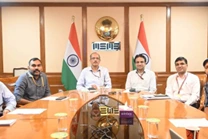
- Recently, the Union Minister for Micro, Small and Medium Enterprises (MSME) inaugurated the Center for Rural Entrepreneurship Acceleration (CREATE) through technology through virtual mode in Leh.
- About CREATE:
- CREATE aims to increase local employment, improve productivity, and enhance rural economic capacity.
- The focus is on improving rural industrialization and developing industries with special emphasis on traditional artisans in places like Ladakh.
- Key features offered by CREATE:
- Pashmina leather transport factory to support quality leather production.
- Training in facilities for the extraction of essential oils from roses and other flowers.
- Training and support in the bio-processing of local fruits and raw materials.
- What is pashmina wool?
- Pashmina refers to a fine variant of spun cashmere (the animal-hair fibre), that is derived from the downy undercoat of the Changthangi.
- Pashmina is obtained from a breed of mountain goats (Capra hircus) found on the Changthang Plateau in Tibet and parts of Ladakh.
Source: PIB
Syntretus perlmani
Why in the news ?
- Researchers recently discovered a new species of parasitoid wasp named Syntretus perlmani.

About Syntretus perlmani:
- New Species: It is a new species of parasitoid wasp.
- Unique Host Targeting: It is the first wasp found to infect adult fruit flies, a stark contrast to related wasp species that usually target the larvae and pupae stages of flies.
- Parasitoid Behavior: These fruit fly invaders are considered parasitoids rather than parasites because they always kill their hosts unlike the latter, which generally leave them alive.
- Specialized Egg Injection Mechanism: Females of S. perlmani tatai use a specialised organ called the ovipositor to insert eggs directly into the stomachs of adult fruit flies.
- Development and Host Death: Over the next 18 days, the eggs develop into spiny larvae and grow slowly into the larvae until they finally leave the larval body to kill the larvae
- Found: The research team found S. aureus in the eastern United States, including Mississippi, Alabama, and North Carolina.
Source: DH
Cellulitis Disease
Why in the news ?
- Cellulitis disease, affecting peoples during the rainy season, is now widespread in the erstwhile Karimnagar district, Telangana.
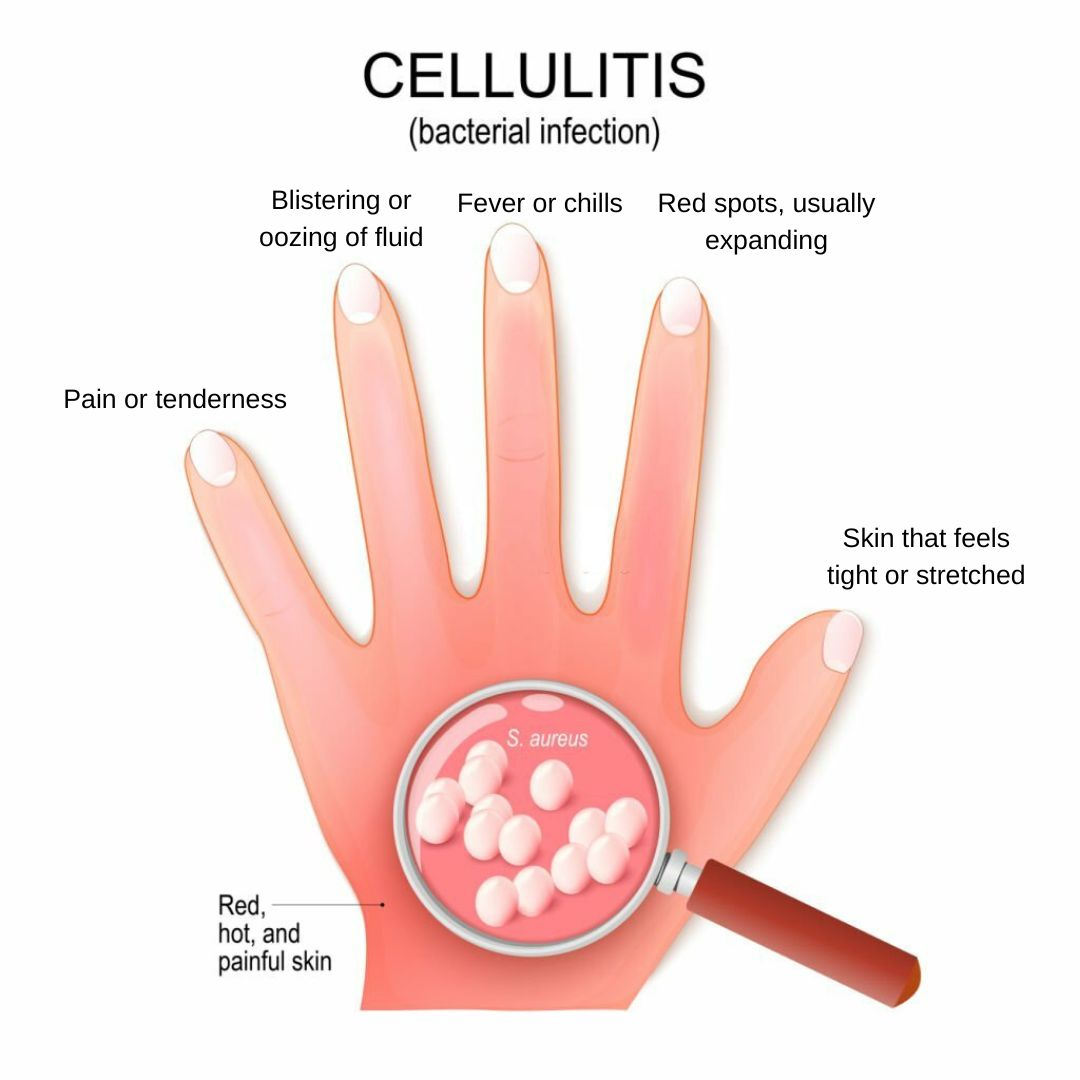
About Cellulitis Disease:
- It is an infection caused by bacteria and affects the lower part of your body, including your legs, feet, and toes.
- It can occur in any part of your body and commonly appears on your face, arms, hands, and fingers.
- It usually happens after some type of injury causes a skin break, including trauma or surgery.
- The infection happens when bacteria, most commonly streptococcus and staphylococcus, enter through a crack or break in the skin.
Symptoms:
- The affected skin is swollen and inflamed and is typically painful and warm to the touch.
- A person may also experience other symptoms of an infection, such as fatigue, chills, cold sweats, shivering, fever, and nausea.
- Left untreated, the infection can spread to the lymph nodes and bloodstream and rapidly become life-threatening.
- Cellulitis isn’t usually contagious and if people have an open wound and have skin-to-skin contact with an infected person’s open wound.
- Treatment includes antibiotics.
Source: DC
Anamalai Tiger Reserve
Why in the news ?
- The Tamil Nadu Forest Department recently has fixed a tracking device on a Nilgiri tahr within the limits of the Anamalai Tiger Reserve.
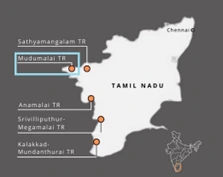
About Anamalai Tiger Reserve:
- Location:
- It is a protected area located in Anamalai Hills, Pollachi and Coimbatore districts of Tamil Nadu.
- It lies south of Palakkadagapin in the South Western Ghats.
- It is surrounded by Parambikulam Tiger Reserve and Chinnar Wildlife Sanctuary to the east and Eravikulam National Park to the southwest.
- Vegetation:
- It supports a variety of habitats, moist evergreen forest, alpine, savannas and swamp grasslands, semi-evergreen forest, wet deciduous forest, dry deciduous, dry scrub and dry forest.
- Flora:
- About 2,500 species of angiosperms are found in the Anamalai Tiger Reserve, including several species of balsam, crotalaria, orchids and kurinchi.
- The reserve is home to wild relatives of cultivated varieties such as mango, jackfruit, wild banana, ginger (Zingiber officinale), turmeric, chilli (Piper longum), cardamom and many others.
- Fauna:
- Important wildlife in the reserve includes: Leopard, Asian Elephant, Sambar, Spotted Deer, Barking Deer, Jackal, Leopard, Jungle Cat.
Source: TH
India’s Power Sector
Why in the news?
- Competitive bidding-based price discovery leveraged rapid technological advancements to achieve efficient pricing for the power sector.
- It combines the procurement of multiple energy sources, such as coal and solar, in a single tender, creating a more complex bidding environment.

Important Facts About India’s Power Sector:
- Global Rank: India is the third-largest producer and consumer of electricity globally.
- Installed Capacity: As of March 31, 2024, India’s total installed power capacity was 442.0 GW.
- Renewable Energy: Renewable energy capacity reached 168.4 GW, constituting 40.9% of total capacity.
Systemic Issues in India’s Power Sector:
- High Fuel Cost: Delays in environmental clearances, land acquisition, and lack of investment in coal extraction technology increase fuel costs.
- Reliance on Imported Coal: Despite abundant reserves, India imported 60 million tonnes of coal in 2023, adding costs of around $2 billion.
- Non-Renewable Dependency: Approximately 80% of India's power generation is reliant on thermal power plants.
- Aged Power Plants: Many plants are outdated and inefficient, leading to increased operational costs.
- Technical and Commercial Losses: The average technical and commercial losses are 27%, with some states experiencing losses as high as 40%.
- DISCOM Financial Health: Poor financial health discourages private investment. For example, Andhra Pradesh DISCOMS reported losses exceeding ₹20,000 crore in 2022.
- Lack of Competitiveness: High industrial tariffs and cross-subsidies affect the competitiveness of India's power sector.
- Fragmented Governance: Multiple agencies managing energy resources create inefficiencies. For example, overlapping roles between the Ministry of Power, Central Electricity Authority, and state utilities.
Government Policies & Initiatives:
- Green Energy Corridor: Projects aimed at enhancing renewable energy evacuation with 8,651 km of transmission lines and 19,558 MVA substations.
- Rooftop Solar National Portal: A streamlined process for residential consumers to apply for solar installations.
- Smart Meters: Over 51.62 lakh smart meters deployed under the National Smart Grid Mission.
- PLI Scheme: ₹19,500 crore allocated for high-efficiency solar PV modules.
- Competitive Bidding: Introduced to increase transparency and lower costs in power generation, especially for renewable energy.
- Saubhagya Scheme: 2.82 crore households electrified as of March 2021 under this scheme.
- KUSUM Scheme: Promotes solar pumps and allows selling surplus power to local DISCOMS.
- LED Distribution: Over 36.86 crore LED bulbs and other energy-efficient devices distributed, saving 48,411 million kWh annually.
Way Forward:
- Separate Bidding: Conduct separate tenders for solar and coal power to avoid complexity and ensure specialisation in renewable or conventional energy.
- Encourage Smaller Developers: Create tenders with lower entry barriers to include smaller players, fostering competition and better price discovery.
- Annual Procurement Calendar: Implement an annual procurement schedule to help developers plan investments and bids efficiently.
- Cross-Subsidy Rationalisation: Gradually reduce cross-subsidies to create a more equitable tariff structure, reducing industrial financial burdens while protecting vulnerable groups.
- Improved Metering: Implement 100% net metering, smart meters, and agricultural power metering to enhance revenue collection and reduce losses. Example: smart meters in Delhi.
- Cross-Border Trade: Promote cross-border electricity trade with neighbouring countries to utilise surplus capacity. Example: India exports power to Bangladesh and Nepal through grid integration.
- Hybrid Power Solutions: Encourage tenders for hybrid energy projects combining solar, wind, and battery storage for a stable power supply.
- Grid Infrastructure Enhancement: Upgrade transmission networks in remote, energy-rich areas to ensure smoother power flow and improve energy security. Example: Upgrading networks in Gujarat.
- Develop Energy Storage: Expand capacity for energy storage to complement renewable sources, ensuring a steady power supply. Example: Energy storage systems developed alongside solar projects in Tamil Nadu.
|
UPSC Civil Services Examination Previous Year Question (PYQ) Prelims Q:1 The term ‘Intended Nationally Determined Contributions’ is sometimes seen in the news in the context of (2016) (a) pledges made by the European countries to rehabilitate refugees from the war-affected Middle East (b) plan of action outlined by the countries of the world to combat climate change (c) capital contributed by the member countries in the establishment of the Asian Infrastructure Investment Bank (d) plan of action outlined by the countries of the world regarding Sustainable Development Goals
Ans: (b) Mains: Q:1 Describe the benefits of deriving electric energy from sunlight in contrast to conventional energy generation. What are the initiatives offered by our government for this purpose? (2020) |
Source: (IE)
Share the article
Edukemy’s Current Affairs Quiz is published with multiple choice questions for UPSC exams
MCQ
Get Latest Updates on Offers, Event dates, and free Mentorship sessions.

Get in touch with our Expert Academic Counsellors 👋
FAQs
UPSC Daily Current Affairs focuses on learning current events on a daily basis. An aspirant needs to study regular and updated information about current events, news, and relevant topics that are important for UPSC aspirants. It covers national and international affairs, government policies, socio-economic issues, science and technology advancements, and more.
UPSC Daily Current Affairs provides aspirants with a concise and comprehensive overview of the latest happenings and developments across various fields. It helps aspirants stay updated with current affairs and provides them with valuable insights and analysis, which are essential for answering questions in the UPSC examinations. It enhances their knowledge, analytical skills, and ability to connect current affairs with the UPSC syllabus.
UPSC Daily Current Affairs covers a wide range of topics, including politics, economics, science and technology, environment, social issues, governance, international relations, and more. It offers news summaries, in-depth analyses, editorials, opinion pieces, and relevant study materials. It also provides practice questions and quizzes to help aspirants test their understanding of current affairs.
Edukemy's UPSC Daily Current Affairs can be accessed through:
- UPSC Daily Current Affairs can be accessed through Current Affairs tab at the top of the Main Page of Edukemy.
- Edukemy Mobile app: The Daily Current Affairs can also be access through Edukemy Mobile App.
- Social media: Follow Edukemy’s official social media accounts or pages that provide UPSC Daily Current Affairs updates, including Facebook, Twitter, or Telegram channels.

